
If you’ve ever strolled through a wildflower meadow and enjoyed the hum of bees, here’s a story to lift the spirits. In just a couple of years, former barley fields north of Perth in Scotland have been transformed into a haven for bumble bees and wildflowers.
The project, known as Rewilding Denmarkfield, has recorded an astonishing increase in both bee numbers and the diversity of important pollinators. For ecologists, this is the kind of positive news that’s both rare and optimistic.
Rewilded land boosts number of bees
Denmarkfield is a 90-acre site near Perth, historically used for barley growing. Years of intensive arable agriculture involving ploughing, pesticide and herbicide use had stripped the land of its richness. According to project monitoring in 2021, when barley monoculture was still dominant, only 35 bumble bees were observed across the surveyed fields. Plant diversity was almost nil, and the landscape was largely uniform.
In spring 2021, landowners Amy and Graham Allen and the Rewilding Denmarkfield team began allowing parts of the land to follow a natural path with the aim of creating a more healthy environment. They stopped barley cultivation in certain fields, reduced active intervention, created new habitat features and allowed natural colonisation of plants to support British bee species.
These initiatives were supported by strategic `seed islands,’ areas planted with trees or shrubs to support seed production and dispersal and attract bees. Over time, cattle were introduced onto the land to graze from August to October, helping break up the soil and provide habitat diversity.
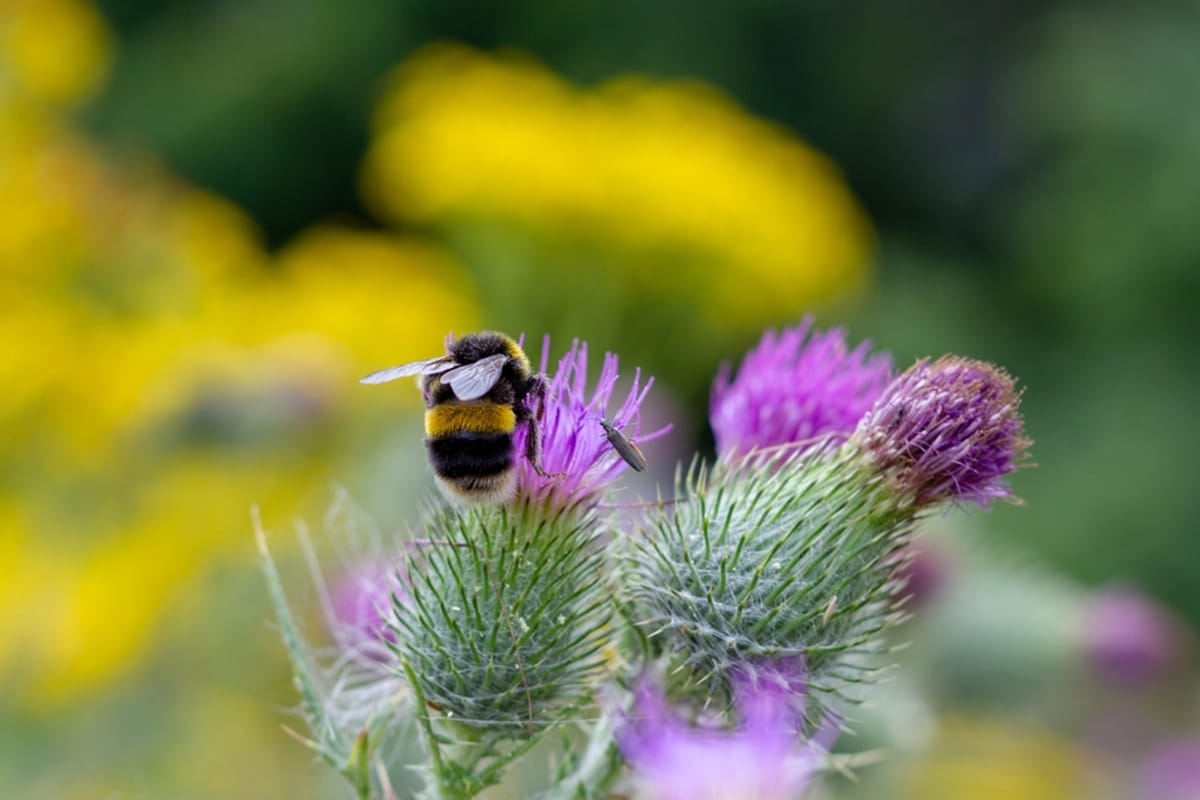
What changed: rapidly rising numbers of pollinating insects
By 2023, two years into the project, the site had seen:
- A leap from 35 bumble bees to 4,056 in the same fields. That’s roughly a 116-fold increase as noted by the Organic Consumers Association.
- An increase in bumble bee varieties: from five bee types UK in 2021 to ten species in 2023. Rewilding Magazine reported that this includes common species like red-tailed, white-tailed and buff tailed bumblebee, but also “cuckoo” bumble bee species that exploit other bees’ nests.
- Wild plant diversity also rose: over 80 native plant species colonised the former barley fields by 2023, including species often dismissed as “weeds” like spear thistle and smooth hawk’s-beard; all valuable for pollinators because they provide nectar, bee pollen and habitat.
- Butterflies more than tripled in abundance. Red-listed bird species of conservation concern increased: a jump from 11 to 17 species were recorded.
Speaking to Rewilding Magazine, ecologist and project manager Ellie Corsie said:
Letting nature lead has had a massive impact… Within two years, the bare soil and barley stubble was naturally colonised by 84 different plant species, and this superb variety of plants attracts thousands of pollinators.

Why the environment has proved so suited to recovery
Several factors combined to make Denmarkfield particularly receptive to restoration and pollinator recovery:
Ceasing intensive agriculture
When ploughing and applications of pesticide and herbicide end and monoculture ceases, the land is allowed to regenerate. Soil disturbance declines and seed banks or neighbouring seed sources can colonise. At Denmarkfield, moving away from barley monocultures allowed wildflowers to emerge and gain traction.
Native wildflower plantings and seed islands
The project planted pockets of plants that were sparse on the site or absent, for example, blackthorn, hawthorn and flowering herbs, and created seed islands to help spread native species across the area, quickly creating diversity.
Habitat structured to boost diversity
Rewilding Denmarkfield didn’t simply let nature take over everywhere. Variation was introduced including undulations in the form of scrapes, limited grazing periods and open areas were retained while scrub and young trees were allowed to regenerate. These initiatives were designed to encourage pollinators, including several species of bee that often prefer sites where there are different microhabitats such as sunlit patches, sheltered edges and flowering plants at different heights.
Minimal or no pesticide or herbicide impact
Removing or drastically reducing chemical inputs allows insects, soil organisms, and wild plants to establish without being poisoned or suppressed. Though the project doesn’t state a complete ban, the shift away from intensive arable farming reduces these impacts. The difference was soon clearly realised as many seeds were able to get established and grow, providing numerous plants for bees and other pollinators.
Monitoring and citizen science
Standard monitoring protocols are used, especially the Bumble Bee Conservation Trust’s BeeWalk to track bumble bee abundance and species across areas of land, enabling comparison with national data. Local volunteers are trained and involved in the project.

Who is behind the project and how it works
Rewilding Denmarkfield is the organisation driving the scheme. Amy and Graham Allen bought the land in 2017 and along with ecologist Ellie Corsie they set the project on its path.
Partnerships include Bumblebee Conservation Trust (for monitoring via BeeWalk), local community groups, volunteers, and people with ecological expertise in re-establishing a bee network. The project also engages the local schools and community through events, education, and hands-on activities like wildflower seed sowing, orchard maintenance and hedge planting.
Regular ecological monitoring is carried out for a range of species including bees, butterflies, birds, botany and earthworms. The baseline data (2021) plus successive years allow comparisons to assess how well the project is developing from year to year.
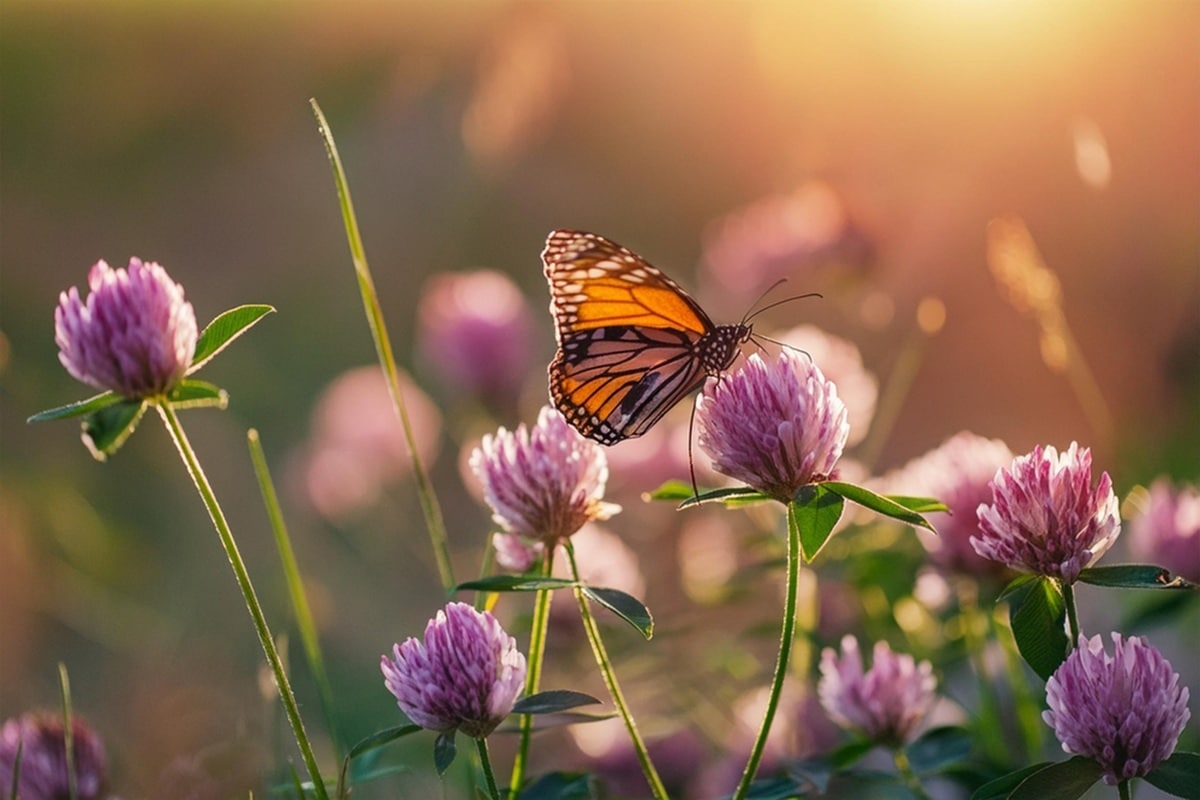
Challenges and limitations
While the story is inspiring, there are caveats and lessons to keep in mind:
- Variability between years: Early data suggests that 2024 was not quite as strong for pollinators as 2023, particularly for some common bumble bee species, for example red-tailed, white-tailed and buff-tailed. Weather, food availability, climate change and other external pressures are still hugely relevant. However, even in 2024, counts for British bee varieties were well above pre-rewilding levels.
- Surrounding land use pressures: The area is still under pressure from development for housing and roads, while surrounding land is intensively farmed. These factors can bring pesticide drift, light pollution and land fragmentation. The edges of these rewilded patches remain vulnerable.
- Time frame for maturity: Wildflowers can colonise quickly, but full ecological maturity including dense meadow systems, stable populations of rarer species and large trees, takes many years to decades. Tree regeneration currently comprises young saplings rather than mature woods.

What the numbers tell us
- A boost in bee populations from less than 35 to 4,056 bees in two years: this is an increase of over 100 times. The project often cites a “116-fold” increase in the number of bee species.
- Species count doubling: From 5 to 10 species of bumble bee across the site. That means common bumble bees plus some less common ones, including “cuckoo bees,” which do not build their own nests but parasitise others. This is an important sign: not only quantity but diversity of British bee species.
- Vegetation richness: Over 80 native plant species colonised the fields, providing bee pollen and a food source for many other insects.
These numbers suggest that if land is given over to regeneration, pollinators can respond quickly. However, protection is needed to ensure any early gains are not lost and that a project will have a long-lasting impact.

What this means for ecology, restoration, and policy
Rewilding Denmarkfield provides lessons for how we can support many types of bee UK-wide as well as wider biodiversity recovery, both in the UK and beyond:
- Speed of recovery: Contrary to pessimistic expectations, ecosystems can show significant recovery in just 2-3 years once farming stops and native plants are allowed in.
- Indicator species matter: Bumble bees serve as good indicators of overall ecosystem health. If they return in abundance and diversity, many other species such as butterflies, birds and soil invertebrates often follow, which Denmarkfield has already shown.
- Policy relevance: This kind of result supports arguments for more land to be set aside, for agricultural subsidy reform, for pollinator-friendly practices, and for rewilding to be included in biodiversity net gain or nature recovery plans.
- Community engagement: Projects like this work best when local people, volunteers and schools are involved and feel ownership. Denmarkfield’s volunteer programme, its community orchard, events, and educational outreach add social value.
- Protection and vigilance: Gains need protection from external negative pressures: pesticide drift, weather extremes, land development, or even reversion to agricultural use. Monitoring is essential so that trends are understood and maintained.

What’s next: the influence of Rewilding Denmarkfield
- Monitoring continuing: The project now has baseline data for 2024-25 and aims to keep tracking into future seasons to see whether bee varieties, numbers and species diversity remain high, whether rarer or specialist bee species appear, and what happens over dry or bad years (Scottish Pollinators).
- Habitat refinement: More scrub, trees, nesting features and water availability is planned to support a wider range of bee species and insects. Using cattle for grazing in autumn will open up the sward, creating edges and diversifying plant communities.
- Scaling up: Denmarkfield could serve as a model. Similar rewilding efforts may be adopted on other former agricultural land, especially near urban fringes, to create networks of wildflower havens and boost bee varieties.
- Public education and involvement: Expanding citizen science, school programmes, community events, and even visitor-friendly walks such as ‘pollinator safaris’ help build public awareness and support – essential for policy and funding. Rewilding Denmarkfield already organises workshops, educational sessions, and has a “Friends of Denmarkfield” volunteer group.
- Policy influence: The results strengthen arguments for biodiversity net gain, for making it easier to restore land, for agricultural reforms that reduce pesticide and herbicide use to create a healty environment, and for policies that support pollinator recovery.
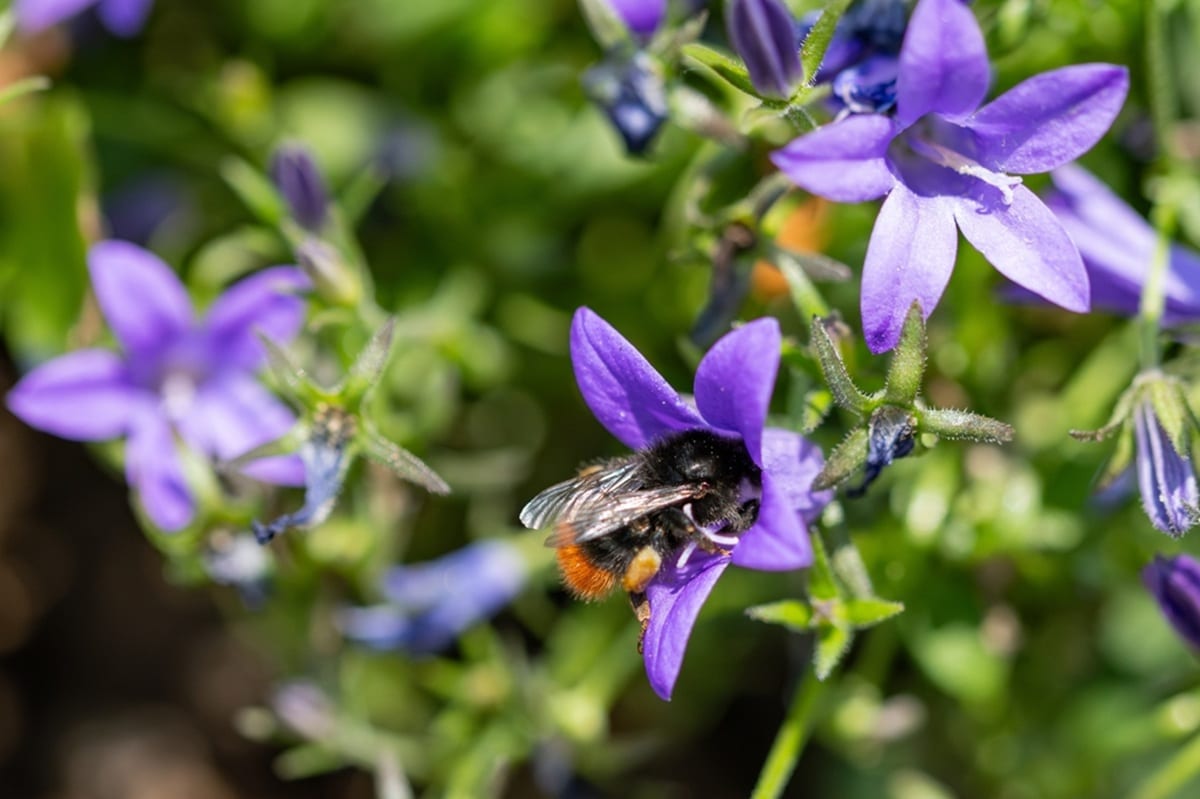
Why this matters, especially now
Here are a few reasons this kind of project hits at a critical moment:
- Bees and other pollinators are under threat: UK data show that in 2024 bumble bee numbers fell to their lowest on record, with some species heavily affected by climate variation, habitat loss, and pesticide exposure. Rewilding Denmarkfield is a counter-story, offering proof that habitat restoration can produce results.
- Nature deficit and dismay: Many people feel ecological decline deeply. Stories like this give hope and motivation. They show that change is possible, even on relatively small land parcels.
- Connectivity and landscape scale: Pollinators need networks of habitats creating stepping stones. This project shows a single site can recover, but wider scale restoration will require policies and funding.
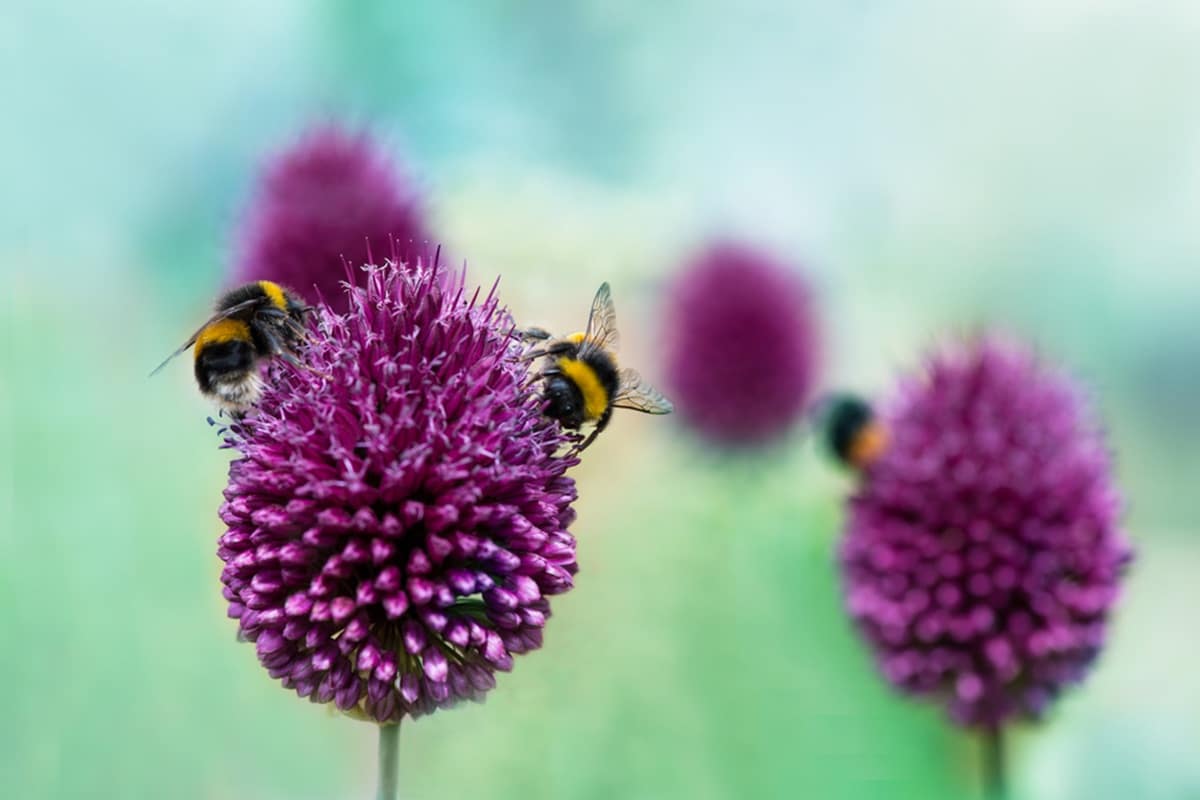
Nature recovery is possible and can counter habitat loss
The Denmarkfield site’s transformation from barley monoculture to wildflower-rich meadows in the northern hemisphere, humming with bees, is more than a cheering story: it’s proof of a concept. Let nature lead, facilitate some of the processes such as creating seed islands, intentional plantings and limited grazing, remove chemicals, give space and very quickly, nature responds.
For ecologists, policymakers, farmers and gardeners alike, Denmarkfield offers lessons: ecosystem recovery isn’t just for national parks; it can happen in farmland, near cities, on 90-acre sites – and every bit counts. Just a few weeks after the start of such a project, bees will start to appear and a bee network will establish itself.
If you’re thinking of rewilding part of your garden to attract bees, supporting local pollinator-friendly projects, acting to help combat climate change or backing policies that protect nature’s recovery, then projects like Denmarkfield highlight what is not just ideal, but possible.
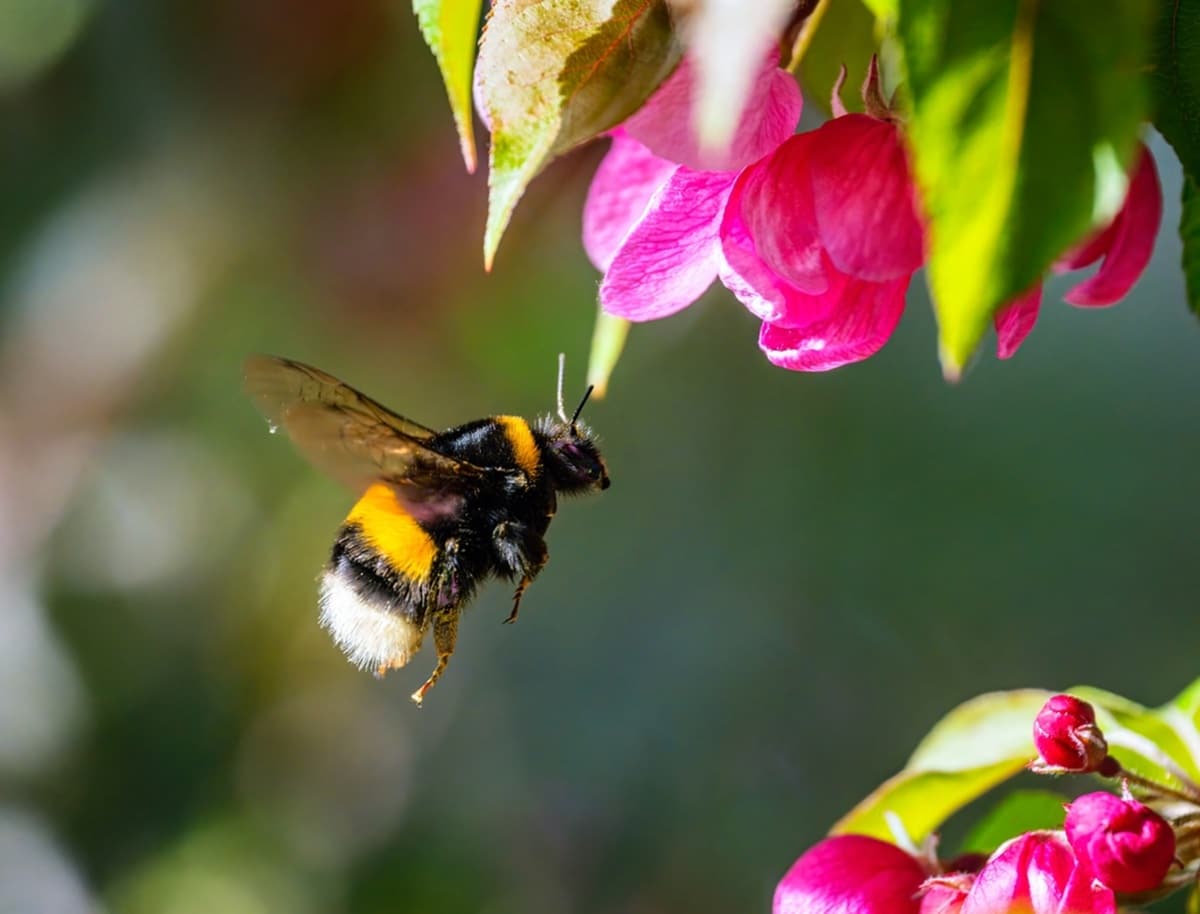
Facts about Bees:
There are over 270 types of bee UK, divided into three types of bee: honey bees, bumble bees and solitary bees.
Solitary bees account for around 90% of UK bee species. Solitary bees include mining bees, red mason bees, the tawny mining bee, leaf-cutter bees, wool carder bees, hairy-footed flower bees and the ivy bee.
There are 24 types of bumble bees, which nest in colonies of around 200. The most common are the tree bumble bee; red-tailed bumble bee; white-tailed and common carder bee.
There is just one species of honey bee in the UK, the European honey bee: finding a colony of wild bees is rare. Honey bees live in domestic hives designed for honey production, which may contain up to 20,000 bees, including worker bees and a queen bee.
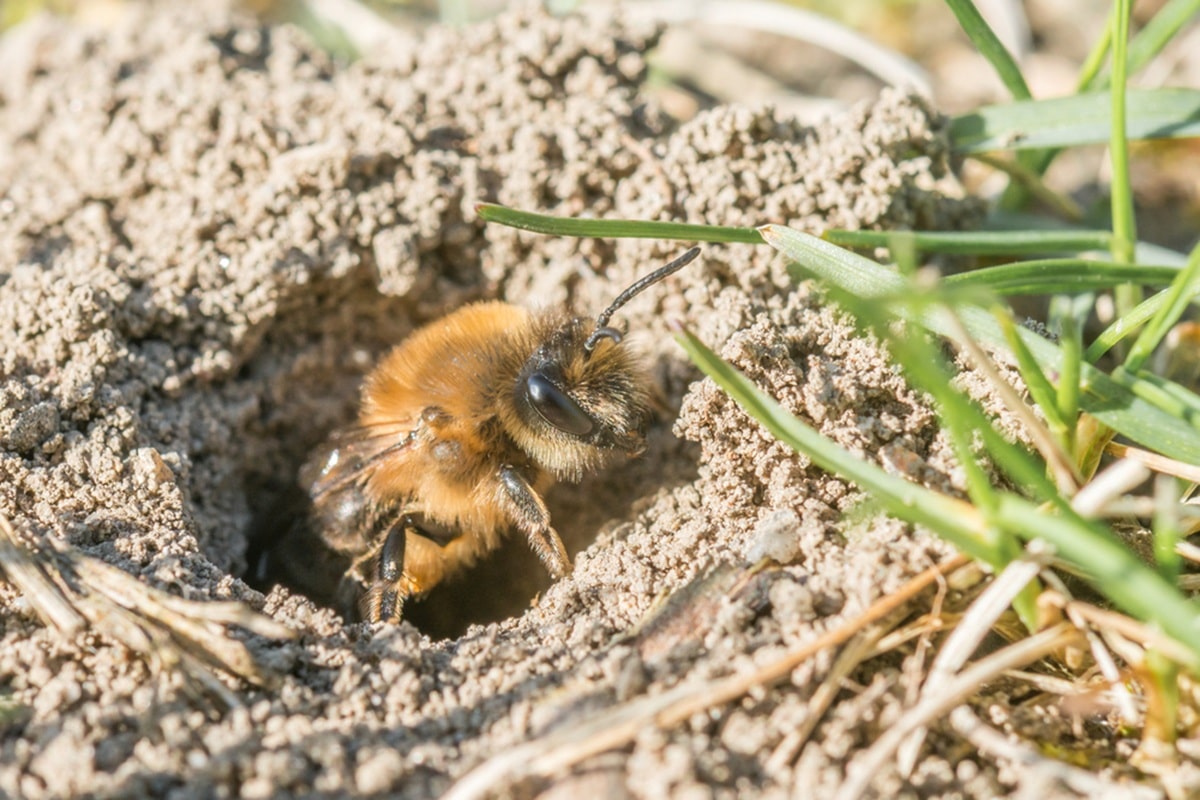
The Importance of Bees to Pollination
Bees are among the most important pollinators on our planet, working tirelessly to keep flowering plants, fruit trees, and outdoor crops thriving. Across the world, there are many species of wild bees, from solitary bees and mining bees to honey bees and the well-known honeybee hive of Apis mellifera. Together, these pollinating insects play an important role in maintaining a healthy environment and supporting the diversity of life that depends on plants.
Not all bees live in hives. In fact, most species are solitary bees, meaning each female bee builds her own nest, often in soil, dead wood, or hollow stems. She will lay eggs, carry pollen on her hind legs, and seal up the nest entrance for the next generation. Mason bees, such as the red mason bee, and leaf cutter bees are classic examples of these hardworking creatures. The tawny mining bee, with its orange abdomen and black face, can often be seen busily digging in bare soil.
Bees’ life cycle
Large numbers of social bees, on the other hand, live in colonies with a queen bee and often around a thousand workers. Bumble bee species like the white-tailed bumble bee form small nests and are effective pollinators of open flowers and native wildflowers. Inside a honeybee hive, the queen is fed royal jelly and tends to the life cycle of the colony, ensuring the bee populations continue to grow. While making honey is one of the many benefits that a bee makes, even more vital is the pollination service they provide to other pollinators and plants.
There are various types of bee families, such as the family Apidae, which includes bumble bees, honey bees, and stingless bees like the sugarbag bee from southern Africa and South America. Sweat bees, plasterer bees, and cuckoo bees, which are closely related to most other bees but lay their eggs in the nests of others, add to this incredible diversity. Some long-tongued bees are adapted to reach deep into tubular flowers, while short-tongued bees prefer shallow open flowers.
Helping bees fly freely
With bee populations under threat from habitat loss and climate change, it’s important to support increasing numbers of these important pollinators. Gardeners can take effective measures such as creating bee hotels for nesting solitary bees and planting wildflowers and fruit trees to help bees with finding food throughout the year. Even small actions can make a big difference: bees evolved alongside flowering plants, and when bees fly, the resulting pollination enables us to grow the crops we need to survive..
If you’d like further information about helping bees or identifying different bee species, take time to watch them in your garden. Whether it’s a tiny mining bee emerging from the soil, honey bees, a buzzing bumble bee with black stripes and a white tail, or a plasterer bee enjoying the sunshine, each plays its part in keeping our world alive and growing.



